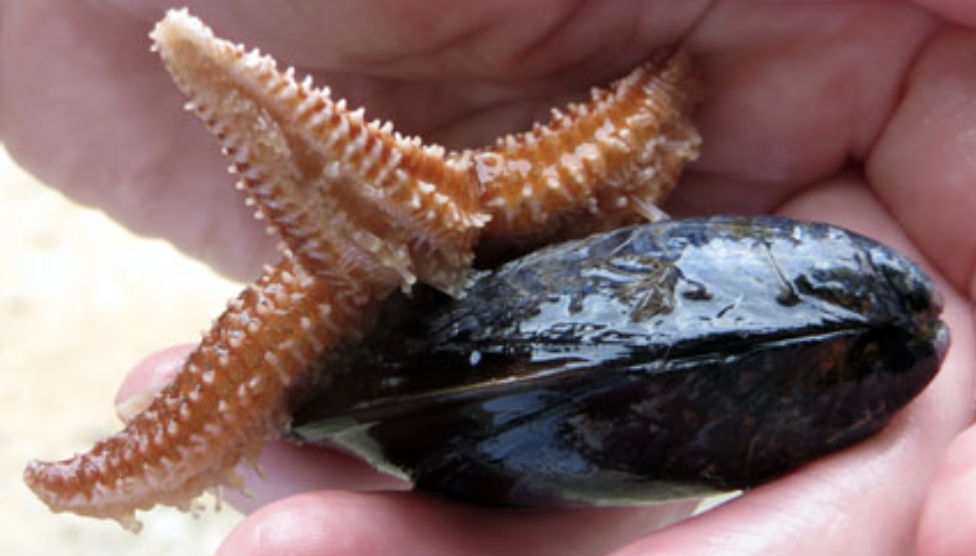There’s been a troubling trend regarding the health of sea stars on both the East and West coasts of the United States. Healthy sea stars like the one pictured above eating a mussel, are succumbing to a disease that looks as though the sea star’s flesh is melting away. At first, white lesions appear on their bodies, especially at the tips of their rays and at the region where the rays join with the center of the sea star’s body. Eventually, the rays detach, or the rays swell, becoming a mushy, gooey white substance. Scientists think this may be caused by a bacterium or a virus, combined with the stress of significant changes in water temperature.
I’ve witnessed this disease first hand. Isolating sea stars once lesions are discovered can keep the disease from spreading. Although most sea stars wind up losing the battle with this disease, occasionally, a few will recover. Because this “melting disease” is far more widespread, and appears to be more contagious than the cyclical “ray rot” that used to rear its ugly head every five years or so, this phenomenon has the potential to devastate the sea star population.
Why should we care? While engaged in some collecting at a tide pool at Halibut Point in Gloucester, I noticed a middle school class conducting a great hands-on experience where students had to locate and identify several species of invertebrates. I overheard a student ask “Mrs. H” why she hadn’t found any sea stars? Mrs. H answered that she was glad there weren’t any sea stars. Sea stars are voracious hunters, she told the student, and eat many of the sea creatures for which they were searching. (Actually, if the students lifted a few rocks at the water’s edge, there were plenty of sea stars in the area. Remarkably, all were healthy.)
But sea stars play an important role in keeping the food web in balance. An oyster grower in Rhode Island used to supply me with many healthy sea stars that were wrapped around the metal cages that contained his growing oysters. Since then, the “melting disease” has devastated the sea star population, and the oyster grower has had little trouble with sea stars attempting to feed on his oysters. Instead, mussels that were once eaten by the sea stars, have been producing larvae that’s been able to penetrate the tightly woven mesh bags containing the grower’s oysters. The larvae would quickly grow into mussels, which would begin to spin byssus, those golden threads that mussels use to hold their shells to rocks, etc. The byssus would wrap around the caged oyster shells, preventing them from being able to open their shells to eat and breath. Eventually the oysters would smother, creating a devastating loss of oysters in the grower’s bed. What was once a thriving business, in spite of the sea stars lining the metal cages of the grower’s operation, was significantly reduced by the mussel community that was breeding at an alarming rate, their population unchecked by the once plentiful sea stars.
The teachable moment: Every species has a role to play in the balance of nature.
For more information about the melting disease, please use the following link:


Add Comment